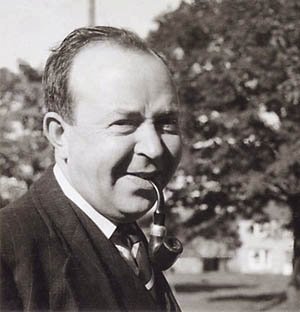 Folk etymologies of
place-names can be of interest for a number of reasons. The following example
was taken down by Calum Maclean on the 21st of January 1951 from the recitation
of John MacDonald, Highbridge, Brae Lochaber and concerns how John o’ Groats
came to be called after a Dutchman:
Folk etymologies of
place-names can be of interest for a number of reasons. The following example
was taken down by Calum Maclean on the 21st of January 1951 from the recitation
of John MacDonald, Highbridge, Brae Lochaber and concerns how John o’ Groats
came to be called after a Dutchman:
Bha
duine a’ fuireach ann an sin agus bha e a’ gabhail an aiseag agus na bu dé an
t-astar a bha sibh, leth-mhìle, ’s e gròta a bhitheadh e. Is ged a bhitheadh
sibh a’ dol trì mìle ’s e gròta a bha e. Mar sin thug iad Taigh Iain Ghròta
air. Agus ’s ann a mhuinntir na h-Òlaind a bha e, an duine seo. Agus tha mi a’
smaointeach’ gun robh e ann mu ’n ãm ’s an robh Rìgh Seumas a h-aon air a
chrùn. Agus thàinig e ’un a’ chrùin, thuirst mi, anns an sia ceud
deug agus a trì ’n uair a chaochail Bànn-righinn Ealasaid ann an Sasann. Agus bha
ochdnar theaghlach aige. Thàinig iad dhachaidh aig a’ Bhliadhna Ùr agus bha
deasbad glé throm ac(hc)a có gheibheadh ceann a’ bhùird. A-nis bha gràinne mhór
de leth-aoin ann – ’s e sin mar a their iad riutha “twins”, agus bha iad a’
connsachadh mu cheann a’ bhùird. Cha do chòrsd seo ris a’ bhodach
idir. Agus dar a thàinig iad dachaidh an ath-bhliadhna, bha taigh aige air a
thogail agus ochd dorsan air. Gheibheadh iad a-staigh air dorus an t-aon. Agus
an uair seo shuidh iad m’an cuairst do’n bhòrd. Agus rinn e bòrd
cruinn agus cha robh deasbad ann mu dhéidhinn ceann a’ bhùirsd. Agus
tha mi deagh-chreidsinn gur h-e sin is coireach na bùird chruinne a bhith ann
anns an latha an-diugh, a’ fear a rinn Iain Ghròta gu bheil iad a’ gabhail sealladh
dheth sin.
And the translation goes
something like this:
There
was a man who stayed there and he took the ferry and no matter how far you
travel, it would cost a groat. Even if you travelled three miles it would still cost a groat. Therefore they called the place Taigh Iain Ghròta (The House of John o’
Groats). This man came of Dutch stock. And I think he lived at the time that
King James I was on the throne. And he came to the throne, as I said, in 1603
when Queen Elizabeth died in England. And he had eight children. They came home
at New Year and they had a great debate as to who should sit at the head of the
table. And there were quite a few twins and they argued about who should get
the head of the table. The old man didn’t enjoy this at all. By the time they
came home the year after he had built a house with eight doorways so that they
could come in individually. Then they could all sit round the table. He made a
round table so that there wouldn’t be any debate as to who should sit at the
head of the table. And I firmly believe that this is why there are round tables
to this day, the man who built John o’ Groats was an example that they followed.
It appears that in this instance
there is some substance to this folk etymology as the town is named after a Jan
de Groote, a Dutchman who obtained a grant for a ferry between mainland
Caithness and Orkney which had only been recently acquired from Norway by King
James IV in 1496. Another theory as to why the town is so-called is that it
stems from a payment of one groat for the ferry.
Reference:
SSS
NB 1, pp. 98–99
Image:
John
o’ Groats / Taigh Iain Ghròta

"it would be ugly." Should the translation not be "it would be a groat."?
ReplyDeleteThanks. Yes, you're right. It should have been 'would still cost a groat'.
DeleteThis blog is fantastic by the way!
ReplyDeleteThanks, we're glad to hear that you like the Calum Maclean blog.
Delete